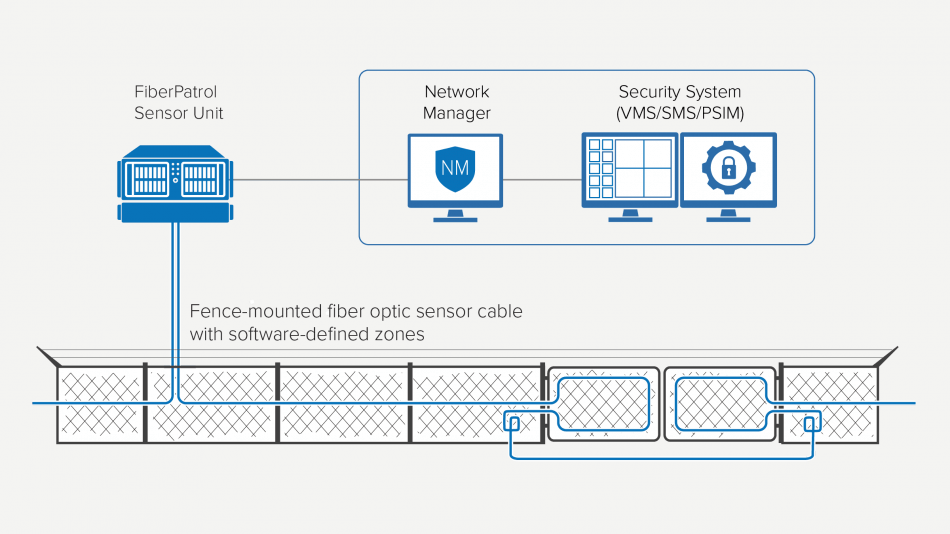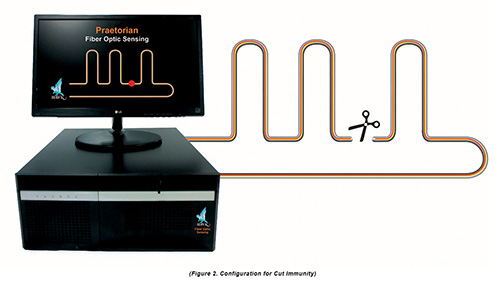Benefits a Fiber Optic Security System for Commercial Security Installations
Benefits a Fiber Optic Security System for Commercial Security Installations
Blog Article
Why Fiber Optic Security Solutions Are the Future of Protection
The change to fiber optic protection systems marks a substantial improvement in the realm of defense, driven by their phenomenal information transmission abilities and strength to exterior interferences. These systems not only facilitate faster and more trusted communication however also provide an economical remedy with minimized maintenance requirements. As the landscape of safety advances along with emerging technologies such as AI and IoT, the potential for optical fiber to enhance and redefine safety and security frameworks ends up being significantly obvious. The effects of these advancements elevate critical questions about the future of safety steps and their effectiveness in an ever-changing environment.
Advantages of Fiber Optic Equipments
Among the main benefits of fiber optic systems is their exceptional bandwidth ability, which facilitates the transmission of huge volumes of data over fars away without considerable loss. This characteristic is especially beneficial for safety and security applications that require the constant monitoring and transfer of high-def video feeds, sensor data, and various other crucial details. Optical fiber can suit the growing needs of modern-day security systems, making sure that information stays intact and reliable.
In addition, fiber optic cable televisions are less susceptible to electro-magnetic interference, which can be a significant concern in settings with different digital gadgets. This resistance enhances the integrity of the information being sent, thus reducing the threat of information breaches or system failures. Fiber optic systems are naturally much more protected than conventional copper cables, as tapping right into a fiber optic line without detection is exceedingly hard.
The durability of fiber optic cables also adds to their allure. They are immune to ecological factors such as wetness and temperature level fluctuations, decreasing maintenance expenses and raising system long life. In general, these benefits setting fiber optic systems as a durable and reliable selection for modern safety frameworks, making sure trusted and safe and secure information transmission.
Improved Information Transmission Rate

The capability to send huge amounts of information promptly promotes the smooth integration of high-def video clip feeds and progressed analytics. Safety systems can now process and evaluate details in real-time, improving feedback times and situational awareness. Furthermore, fiber optic connections support longer transmission ranges without destruction of signal top quality, making them suitable for large safety and security networks.
The boosted speed of fiber optic systems not only enhances the performance of safety operations yet also decreases latency. This is specifically important in essential circumstances where prompt decision-making can protect against protection breaches or reduce potential dangers. As companies remain to prioritize security and effectiveness, the need for quick and reputable data transmission will most certainly solidify fiber optic systems as a foundation of modern-day safety infrastructure.
Resistance to Interference
Fiber optic security systems consistently show exceptional resistance to electromagnetic interference, a critical advantage in environments susceptible to electronic sound. Unlike typical copper cables, which can be adversely impacted by electromagnetic fields, radio regularity disturbance, and various other kinds of electrical disruption, fiber optic cords make use of light to send data. This fundamental building makes certain that the signals continue to be clear and unaltered, no matter surrounding digital activity.
Using glass or plastic fibers in fiber optic modern technology develops a barrier against interference, enabling trusted data transmission also in challenging situations such as industrial facilities, urban locations with high digital website traffic, or places near radio towers. This particular considerably decreases the probability of signal deterioration or loss, making fiber optic systems especially suitable for security applications where stability and precision of information are critical.
Additionally, this resistance to interference boosts the total performance and integrity of security systems, ensuring that tracking and sharp systems function perfectly. In a world where safety is increasingly threatened by sophisticated technologies, see this here the strength of fiber optic systems sticks out as a critical attribute, reinforcing their status as an essential element of modern-day safety and security facilities.
Cost-Effectiveness With Time
Considerable price savings can be accomplished over time with the implementation of fiber optic safety systems. While the initial investment may appear higher compared to typical copper-based systems, the lasting monetary advantages come to be noticeable through reduced functional and maintenance expenses (fiber security). Fiber optic wires are inherently a lot more resilient and much less vulnerable to ecological elements, which equates to lower substitute and repair service expenditures over their life-span
In addition, fiber optic systems require much less power to operate, which further reduces power costs. Enhanced data transmission capacities enable less repeaters and amplifiers, reducing devices financial investment and enhancing installment procedures. The scalability of these systems likewise adds to cost-effectiveness, as organizations can broaden their security facilities without sustaining substantial added costs.
One more factor to consider is the enhanced effectiveness in tracking and response capabilities that optical fiber provide. Enhanced real-time data transmission can cause quicker case reaction times, possibly mitigating losses and obligations linked with safety violations. Altogether, the long-lasting benefits of fiber optic security systems not only validate the preliminary expenditure but likewise place them as a financially prudent selection for organizations seeking durable defense remedies.

Future Innovations in Safety
Advancing technologies are established to revolutionize safety and security systems, incorporating artificial intelligence (AI) and artificial intelligence to improve hazard detection and feedback capacities. These technologies will certainly permit safety and security systems to evaluate substantial amounts of data in real-time, recognizing patterns and abnormalities that indicate possible threats. This aggressive strategy will allow much faster decision-making and more reliable case responses.
In addition, the unification of the Internet go to my blog of Points (IoT) is paving her comment is here the means for interconnected safety tools, offering thorough surveillance and monitoring. Smart sensors can pass on details concerning environmental changes, while automated informs can notify security personnel promptly of suspicious tasks.
Moreover, the development of biometric technologies will even more strengthen security systems. Facial acknowledgment, fingerprint scanning, and retina identification are becoming more innovative, giving layers of authentication that are difficult to bypass.
Conclusion
To conclude, fiber optic security systems stand for a substantial innovation in defense innovation, offering unrivaled data transmission speed, resistance to electromagnetic interference, and long-lasting cost-effectiveness. As the need for innovative security remedies remains to expand, the integration of fiber optics with emerging modern technologies such as AI, IoT, and biometrics will even more boost safety facilities (fiber security). The mix of these technologies will certainly ensure an extra protected and receptive setting, solidifying optical fiber as a foundation of future security systems
Report this page